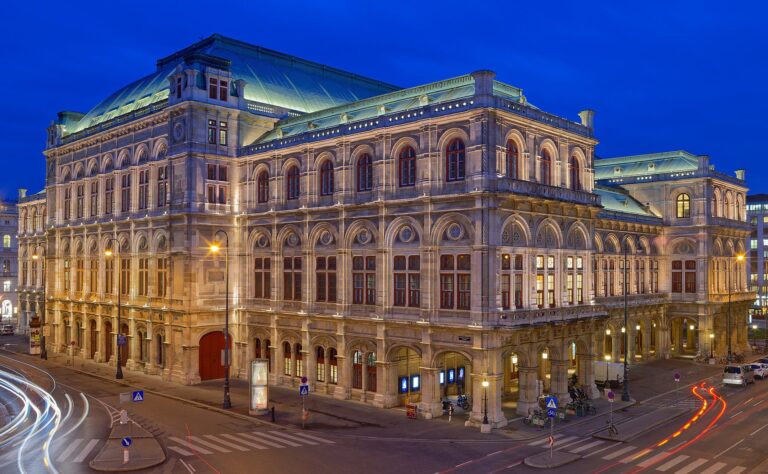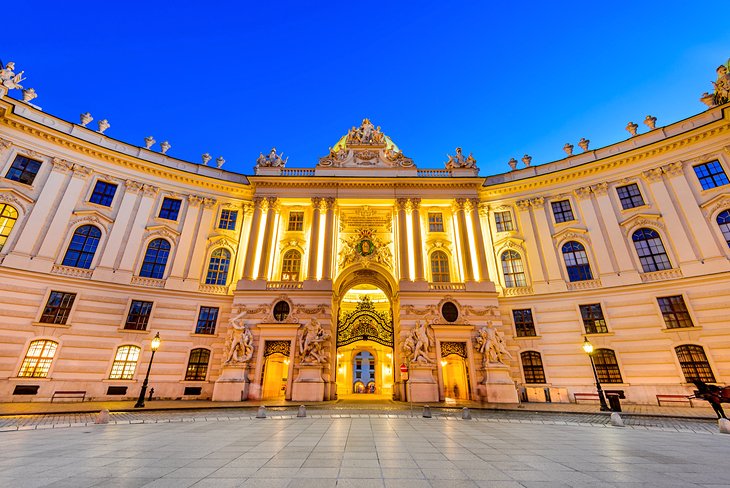General Information
Berlin, the capital of Germany, is a vibrant city known for its fascinating history, artistic innovation, and dynamic culture. From being at the center of World War II and the Cold War, to its modern reputation as a global hub for creativity, nightlife, and technology, Berlin offers a unique blend of the old and the new. The Berlin Wall, which once divided the city, now serves as a symbol of reunification and the resilience of the city’s people. Today, Berlin is a city full of art galleries, museums, alternative scenes, and an ever-evolving cultural landscape. Whether you’re exploring the historical landmarks, enjoying a techno party, or simply strolling through its lush parks, Berlin is a city that constantly reinvents itself.
Location
Berlin is located in the northeastern part of Germany, about 70 kilometers (43 miles) from the Polish border. The city sits along the Spree River and is surrounded by forests, lakes, and natural parks. As the capital of Germany, Berlin is an important political, cultural, and economic center. With its diverse and expansive urban landscape, the city is divided into different districts, each offering its own distinct atmosphere, from the historic Mitte to the bohemian vibes of Kreuzberg.
How to Get There
- By Air: Berlin is served by two main airports: Berlin Brandenburg Airport (BER), the city’s primary international airport, and Tegel Airport (now closed). Berlin Brandenburg offers international flights from cities all over the world. From the airport, you can reach the city center by S-Bahn (suburban train), buses, or taxis.
- By Train: Berlin’s central train station, Berlin Hauptbahnhof, connects the city with all major European destinations. High-speed trains such as ICE (InterCity Express) offer fast connections to cities like Hamburg, Munich, and Frankfurt.
- By Bus: International buses from companies like FlixBus connect Berlin with destinations across Europe. Most buses arrive at the Berlin ZOB (central bus station), located near the Spandau district.
- By Car: Berlin is well-connected by Germany’s famous Autobahns (highways). If you’re driving, keep in mind that Berlin’s inner city has a low-emission zone where only vehicles meeting environmental standards are allowed.
Best Time to Visit
- Spring (April to June): Spring in Berlin is a pleasant time to visit, with mild temperatures (around 10°C to 20°C) and fewer tourists. The city’s parks, including Tiergarten and Tempelhofer Feld, are great for picnics and outdoor activities.
- Summer (July to August): Summer brings warmer temperatures (20°C to 30°C) and a lively atmosphere with open-air events, concerts, and festivals. This is peak tourist season, so expect crowds at major attractions. However, the long daylight hours allow you to enjoy the city to the fullest.
- Fall (September to November): Fall is a fantastic time to explore Berlin with cooler temperatures (10°C to 20°C) and colorful autumn foliage in the city’s parks. The crowds thin out, and you can experience a more relaxed vibe.
- Winter (December to February): Winters are cold, with temperatures ranging from -2°C to 5°C, but this is when Berlin transforms into a festive winter wonderland. The Christmas markets are a highlight, offering local crafts, mulled wine, and seasonal foods. It’s a quieter time to visit, but perfect for winter activities.
Where to Stay
- Luxury: For a luxurious stay, the Adlon Kempinski is one of Berlin’s most prestigious hotels, located near the Brandenburg Gate. The Hotel de Rome offers elegant rooms and is located in a historic building, while The Ritz-Carlton offers high-end amenities and views of Potsdamer Platz.
- Mid-range: Motel One Berlin-Alexanderplatz is a stylish and affordable hotel with great amenities and a central location. Another good mid-range option is The Weinmeister Hotel, located near Hackescher Markt, offering modern rooms and easy access to nightlife.
- Budget: For budget-friendly stays, consider Generator Berlin Prenzlauer Berg, a trendy hostel known for its social atmosphere and great location. Alternatively, The Circus Hostel is a popular choice for backpackers and offers private rooms and dorms.
- Unique: For something unique, stay at the nhow Berlin, a quirky, music-themed hotel located along the Spree River, or book a room in a houseboat on the river for a one-of-a-kind experience.
Top Attractions
- Brandenburg Gate: One of Berlin’s most iconic landmarks, the Brandenburg Gate symbolizes the reunification of Germany. It was once a symbol of division during the Cold War and is now a symbol of unity.
- The Berlin Wall Memorial and East Side Gallery: The Berlin Wall Memorial offers insight into the city’s Cold War history. The East Side Gallery, a 1.3 km stretch of the Berlin Wall, has been transformed into an open-air gallery covered with murals.
- Reichstag Building: The Reichstag houses the German Parliament and features a stunning glass dome designed by Norman Foster, offering panoramic views of the city.
- Museum Island: Located in the heart of Berlin, Museum Island is home to world-class museums such as the Pergamon Museum, Altes Museum, and Bode Museum. A UNESCO World Heritage site, it’s a must-visit for art and history enthusiasts.
- Berliner Dom (Berlin Cathedral): A magnificent baroque-style cathedral, the Berliner Dom offers stunning views of the city from its dome.
- Potsdamer Platz: A major commercial and cultural hub, Potsdamer Platz is home to the Sony Center, numerous shopping centers, theaters, and restaurants.
- Holocaust Memorial (Memorial to the Murdered Jews of Europe): A poignant and powerful memorial located near the Brandenburg Gate, the Holocaust Memorial consists of 2,711 concrete slabs, symbolizing the lives lost during the Holocaust.
- Charlottenburg Palace: A beautiful baroque palace surrounded by lush gardens, Charlottenburg Palace is one of the most magnificent royal residences in Berlin.
Getting Around
- Public Transport: Berlin has an extensive and efficient public transport system, including the U-Bahn (subway), S-Bahn (urban trains), trams, and buses. A Berlin WelcomeCard offers unlimited travel on public transport and discounts to various attractions.
- Taxis and Ride-Sharing: Taxis are readily available throughout the city. Uber and Bolt also operate in Berlin, offering an alternative for getting around the city.
- Biking: Berlin is a bike-friendly city with many dedicated cycling paths. You can rent bikes through services like Lime, Donkey Republic, or Nextbike.
- Walking: Many of Berlin’s top attractions are within walking distance from each other, especially in the Mitte district. Strolling through areas like Kreuzberg and Prenzlauer Berg is a great way to explore the local culture.
Local Cuisine
- Currywurst: A classic Berlin street food consisting of sausage topped with a curry-flavored ketchup sauce. It’s often served with fries or bread.
- Berliner (Donut): A jam-filled pastry, typically eaten during festivals or holidays. It’s similar to a jelly donut, with a variety of fillings.
- Sauerbraten: A traditional German pot roast, usually made with beef, marinated in a sweet and sour sauce, and served with dumplings or potatoes.
- Königsberger Klopse: A dish made of meatballs served with a creamy sauce, typically paired with potatoes.
- Bier: Berlin has a strong beer culture. Be sure to try a Berliner Weisse, a sour wheat beer served with flavored syrups like raspberry or woodruff.
Restaurants to try include Zur letzten Instanz (Berlin’s oldest restaurant serving traditional German dishes), Café am Neuen See (located by a lake, perfect for beer and snacks), and Neni (for Middle Eastern fusion food).
Shopping
- Kurfürstendamm (Ku’damm): One of Berlin’s most famous shopping streets, offering everything from high-end fashion brands to department stores like KaDeWe (Kaufhaus des Westens).
- Hackescher Markt: A trendy area in Mitte with unique boutiques, designer shops, and galleries. It’s perfect for those looking for independent fashion and art.
- Mauerpark Flea Market: Located in the Prenzlauer Berg district, this popular market offers vintage goods, handmade crafts, and street food.
- Friedrichstrasse: A high-end shopping street in Berlin with luxury shops, boutiques, and flagship stores.
Nightlife
- Berghain/Panorama Bar: One of the world’s most famous nightclubs, Berghain is known for its techno music and industrial atmosphere. It’s a must-visit for electronic music lovers.
- Clärchens Ballhaus: A historic dance hall offering live music, dancing, and a lively atmosphere.
- Sisyphos: An underground techno club with a great vibe and a huge dance floor, offering long hours of electronic music.
- Prater Garten: A beer garden where you can enjoy a relaxed evening with friends and local beers in a historic setting.



